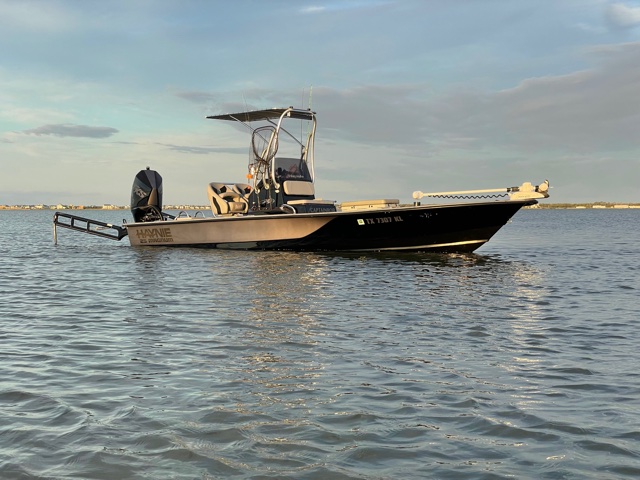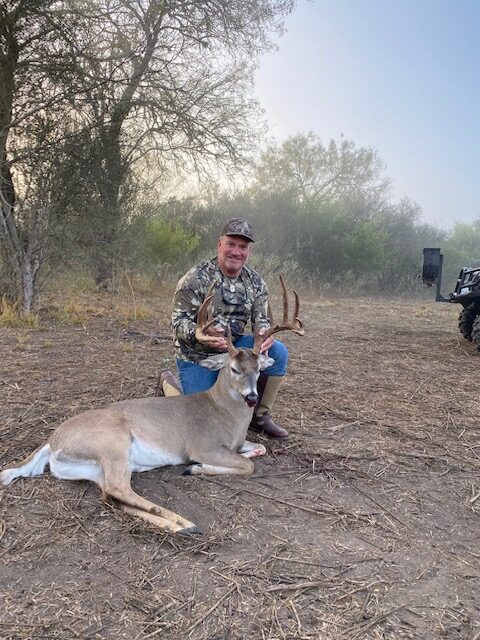FISHING GUIDE SERVICES

For your guided Fishing trip, you will board a 2022 Haynie 25 Magnum powered by a Mercury 300 4 stroke and head out to the bay for fishing fun!
There is a limit of 4 persons per trip. The average trip time is 6 hours, mornings and afternoons.
Operating out of Rockport, TX, areas that we service in the Texas Coastal Bend include:
Mesquite Bay
Mesquite Bay is the northern most bay in the Coastal Bend region. It is home to the much loved Cedar Bayou. Cedar Bayou is a natural pass between St. Joseph’s and Matagorda Island that has periodically been opened and closed by hurricanes through out history. .
Surrounded by tidal lakes and marshes, Mesquite Bay is well know for its redfish, trout and flounder populations. Bordered by the Aransas Wildlife Refuge to the west and uninhabited St. Joseph and Matagorda Islands to the south and east, access to Mesquite Bay is limited, keeping fishing pressure down, compared to other area bays.
Navigating Mesquite Bay can be hazardous because of the large number of unmarked oyster reefs spread thought the bay and extreme caution should be exercised. Most boaters enter the bay on the northwest end from the Intracoastal Waterway.
Copano Bay
Created by the convergence of Copano Creek, the Mission River, and the Aransas River, Copano Bay is a rich marine habitat which is dotted with oyster reefs through out its waters. Like many of the bays of the Texas Coastal Bend, navigating Copano Bay can be hazardous to boaters that are not familiar with it and its seemingly random oyster reefs.
Copano Bay and its supporting estuaries, Mission Bay and Port Bay are very popular year round for anglers targeting redfish and trout. Its reef system in the open water give its marine life the structure they need to strive and the rivers and creeks give inflows of nutrients and deep cuts for fish to run up in during cold snaps.
St. Charles Bay
A small protected bay in the northern most part of the Texas Coastal Bend, St. Charles Bay is local favorite for redfish. Bordered by the Aransas National Wildlife Refuge on the west and the Lamar Peninsula on the east, St. Charles features long grass and sand shorelines broken up up by slews, cuts and creeks that are excellent habitat for redfish looking to ambush small prey.
St. Charles bay is serviced directly by boat ramps in Lamar and in the Pelican Island State Park. Some small boats and kayaks also launch in Cavasso’s Creek where it crosses Texas Highway 35 north of Lamar.
Aransas Bay
Aransas Bay is a big bay at the northern end of the Texas Coastal Bend. It is roughly 16 miles long and 6 miles wide. It is bordered on the east by St. Joe Island and Live Oak Peninsula on the east. Rockport, Texas is the primary city with access to Aransas Bay. Relatively deep in the middle, Aransas Bay features a large number of oyster reefs dotted through out the bay, with most being in the northern sections that lead into Carlos, St. Charles and Copano Bays.
The eastern shoreline of the bay features large grass flats and tidal lakes created by centuries of hurricanes washing over the dunes of St. Joe Island. To the south, there are islands and cuts leading back into adjacent Redfish Bay.
Cedar Bayou
Cedar Bayou is a salt water channel on the Texas coast that separates San Jose Island from Matagorda Island. This pass serves as a water exchange between the Gulf of Mexico, San Antonio, Matagorda, and Aransas Bay systems.
Fishing in Rockport area bays gets better every day! Cedar Bayou is closed to boats due to the amount of organisms that relay on this pass. This is one of the best fishing spots in the Rockport area. The Cedar Bayou flats are located at the mouth of Cedar Bayou and are a shallow, grassy fishing area. This is one of the best places to fish for redfish and trout year round! Experienced wade fishers find this to be a fabulous place to go wade fishing.
